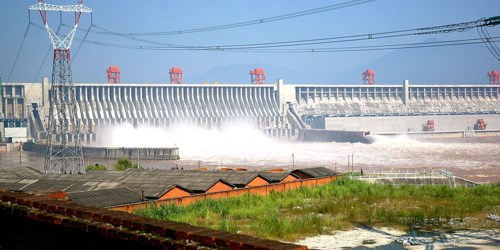Article by Robert Mcilvaine – The Mcilvaine Company
___
Vietnam, Indonesia, the Philippines, and a few other countries are also installing FGD systems at an accelerated rate. The actual purchasers are large engineering companies with international partnerships or Chinese companies who may be supplying power plant financing along with construction of the FGD systems.
Extreme conditions
China is upgrading more than 200,000 MW of coal fired boilers to improve efficiency from the subcritical and supercritical level to that of ultra-supercritical. The target is 50 percent efficiency and plants as clean as the cleanest gas fired plant. These upgrades with the higher temperatures and pressures in the steam system require investment in valves designed for the extreme conditions.
Biopharmaceutical construction in the United States is another high growth market. The market for valves is growing faster than total CFT systems. The reason is that much of the investment is in closed systems. Butterfly valves are used in the transfer of product from one containment vessel to the next.
Hydraulic fracturing in the U.S. is having an impact on valve sales not only in the direct use, but in industries benefiting from the low raw product prices. The U.S. was already the largest combined oil and gas producer prior up to April of this year, when it also became the largest oil producer. Investment by the major oil companies is having a significant impact. The majors will produce half the oil coming out of the Permian basin in the coming decade.
Increase in refining
This is important not only because of the increase in supply but also the concurrent increase in refining and transportation capacity. Presently USD$100 billion is being spent for terminals, LNG liquefaction facilities, refineries, and petrochemical plants in Texas and Louisiana. Planned projects will generate a USD$20 billion per year capital investment and over USD$300 million per year in new CFT products. This initiative also accelerates the concentration of CFT purchasing in a few companies. Chevron and Exxon will each be producing more than 1 billion barrels/day in the region.
Hydraulic fracturing requires the manufacture of special sands, the trucking of these sands to the drill site and then the mixing of the sand with water and additives. Finally, the mix is injected at high pressure into the well. A significant number of valves are needed in this process.

China is also a leading purchaser of zero liquid discharge (ZLD) systems. Most Chinese power plant operators recirculate wastewater after treatment with membrane systems. Slurries are directed to evaporators where water is removed and solids are created. They are treated in hazardous landfills.
The largest user of water in the world is the power industry. In the U.S., as in most countries, there is a municipal wastewater plant within 100 miles of every power plant. There is a growing trend to upgrade the quality of the wastewater discharged from the municipality and transport it to the local power plant for use in cooling.
In the mining industry there are some growth segments such as lithium processing. This industry is characterised by disparate size and growth from country to country. The market can be surging in one country with ores which are lower in cost to mine, while the countries with the higher costs experience declining sales.
One opportunity for valves which is promising, but not yet a commercial market, is the production of rare earths from flyash. Acid leaching is one of the steps in the extraction process. Substantial investments in valves are required per ounce of rare earths extracted. A new/old variation could accelerate the market. It is distinguished as ‘an insitu rare earths feed stock generation”. Instead of a coal fired power plant using a traditional precipitator and single stage scrubber system, a twostage scrubber is substituted.
The first stage operates at pH 1 and captures the HCl and flyash. A bleed stream with flyash and 30 percent hydrochloric acid creates a rare earth separation feedstock. The second stage scrubber captures the SO2.
Biomass combustion
A long-term potential growth market could be biomass combustion with CO2 sequestration. The 4000 MW Drax plant in the United Kingdon has been converted from coal to biomass. A pilot program sequesters some of the CO2. The owner has alluded to “Sucking the CO2 out of the air”. Unlike wind or solar, this process removes CO2 from the air at a rate equivalent to what the former plant discharged. If all the plants in the world adopted this scheme in 30 years, the amount of CO2 in the atmosphere would be as low as it was 30 years ago.
The impracticality of the widespread use of the concept is apparent. However, there is a strong movement to plant trees all over the world as the best way to combat greenhouse gases. The problem is that when all these new trees reach 30 years of age, they start dying and decomposing and a CO2 equilibrium is reached. This would not be the case if the biomass were combusted and CO2 sequestered. The challenges to this approach are substantial and the costs would be high. However, compared to other schemes such as complete reliance on solar and wind, the cost would not only be less, the benefits would be considerably greater. At this point the concept should be labeled as not presently practical and very costly, but less so than alternatives other than living with increased CO2 levels.
REFERENCE
1. Industrial Valves: World Market published by the Mcilvaine Company
About the Author
https://www.mcilvainecompany.com



